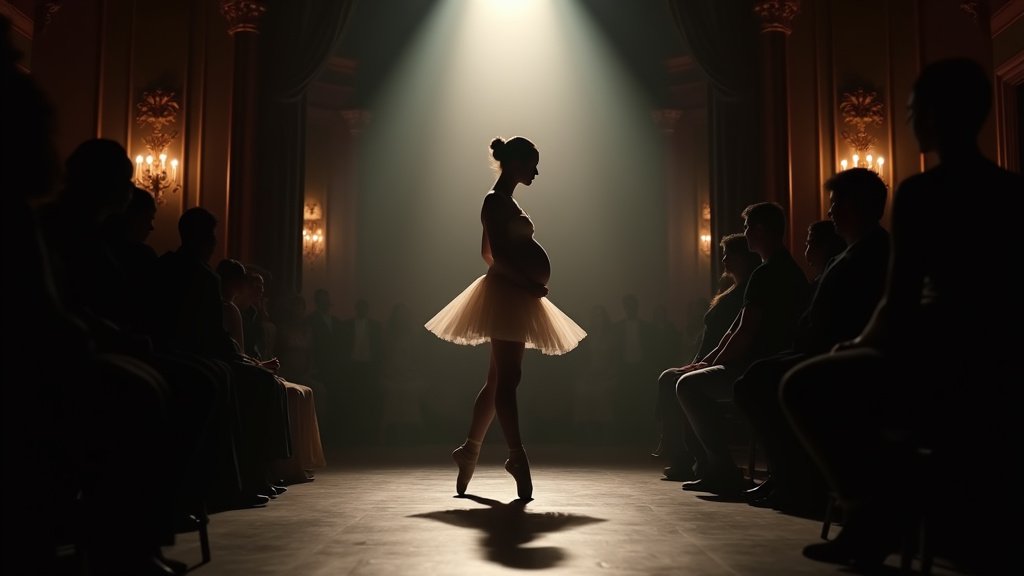Ballet’s Body Burden: Ballerinas Fight for Paid Leave and Recognition
In the demanding world of ballet, where artistry and physical perfection reign supreme, a quiet revolution is underway. Ballerinas, the very embodiment of grace and discipline, are increasingly raising their voices to challenge a system that often disregards their fundamental needs, particularly when it comes to paid leave and the realities of postpartum bodies. This article delves into the struggles of these dancers, highlighting the double standards and expectations they face, and the fight for recognition and support.
The Unspoken Sacrifice
The ballet world is known for its rigorous training, relentless competition, and the pressure to maintain an idealized physique. Dancers dedicate their lives to the art form, often prioritizing it above all else. However, this dedication comes at a cost, especially for women who also aspire to have families. The piece underscores this challenge, emphasizing the difficult choices ballerinas are forced to make between their careers and their personal lives, often made harder by a lack of paid leave.
For many ballerinas, the financial implications of not having paid leave are devastating. They are often forced to choose between taking unpaid time off to care for their newborns or returning to the stage prematurely, risking their health and career prospects. This precarious situation underscores the systemic issues within the ballet industry and the urgent need for change.
Postpartum Realities Ignored
Beyond the financial burdens, the article brings to light the often-ignored challenges faced by postpartum bodies. Ballet is a physically demanding profession, and dancers are expected to return to peak performance quickly after giving birth. The piece examines the expectations placed on these women, where they are sometimes pressured to prioritize the art form even when dealing with the physical and emotional demands of motherhood. This pressure can lead to injuries, burnout, and a feeling of isolation.
Ballerinas’ bodies undergo incredible strain and significant changes. They must navigate their demanding profession while simultaneously recovering from childbirth, a reality that often goes unrecognized or is minimized within the ballet world. The article emphasizes the importance of acknowledging these realities and providing adequate support to help dancers successfully navigate their careers and families.
Double Standards and Expectations
The article also sheds light on the double standards prevalent in the ballet world. While the profession celebrates the beauty and artistry of its dancers, it often fails to provide the necessary support systems, particularly for women. This disparity highlights a systemic issue, where the needs of female dancers are frequently overlooked in favor of the demands of the art form.
Ballerinas often face immense pressure to maintain an ideal body shape and weight, which can be difficult to sustain during and after pregnancy. This can result in feelings of inadequacy and anxiety, which further impact their performance and overall well-being. There is an urgent need for a cultural shift within ballet to recognize and support the physical and emotional needs of dancers, especially during this sensitive period.
The Fight for Recognition
The article underscores the ongoing fight for recognition and rights within the ballet community. The piece emphasizes the importance of advocating for policies that support dancers, such as paid leave, access to healthcare, and supportive working environments. This includes educating the ballet establishment on the real and present needs of ballerinas, and working towards change.
The current fight for rights underscores the need for ballet institutions to listen to the voices of their dancers, and implement positive change. Recognising and accommodating their fundamental needs is not only a matter of fairness but an essential investment in the long-term health and sustainability of the art form.
A Call to Action
This is not merely a discussion of hardships faced by ballerinas; it is a call to action. The article emphasizes the need for a more equitable and supportive ballet environment. This involves open conversations about the challenges dancers face, the development of clear policies that address their needs, and the implementation of supportive resources. The need for a shift in the culture of ballet is clear, highlighting a necessity for change.





